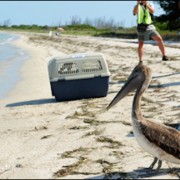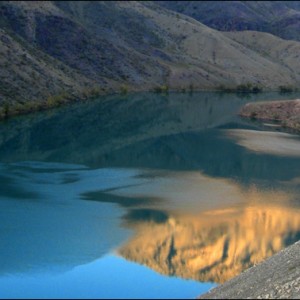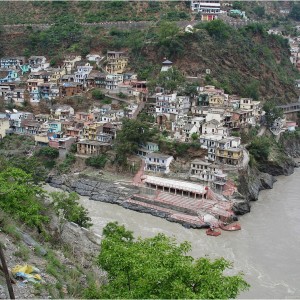Asian Carp Case Goes to Court as Foundation Pledges $500,000 to Protect the Great Lakes
Invasive Asian carp were splashed all over the news last week, making waves in a federal court in Chicago and a surprise appearance on the Missouri River.
Five Great Lakes states working to keep the invasive species out of the lakes presented their arguments before a federal judge in a Chicago courtroom on Monday. The Supreme Court had declined to hear a similar case earlier this year, prompting attorneys general from Michigan, Wisconsin, Ohio, Minnesota and Pennsylvania to sue in U.S. District Court in July. The states are seeking to force the closure of Chicago-area shipping locks that could let the fish into the lakes, fearing that the plankton-sucking fish would devastate the region’s $7 billion sportfishing industry. Chicago-area businesspeople oppose the move because of its potential impact on the region’s shipping and charter industries, and they argue that the scientific evidence for the imminent threat is flimsy.
In a three-hour hearing Aug. 23 in Chicago’s U.S. District Court, attorneys from Michigan, Ohio, Pennsylvania, Wisconsin and Minnesota laid out their case for an emergency injunction to close the locks. Robert Reichel, Michigan’s assistant attorney general, called the Asian carp threat a “biological tipping point” for the Great Lakes, the Chicago Tribune reported. The lakes—the largest freshwater system on the planet containing 20 percent of the earth’s fresh water—have been hammered by a host of invasive aquatic species over the past 60 years, including sea lampreys, alewives and zebra mussels.
Asian carp have been making their way up the Mississippi and Illinois rivers for decades after being introduced in southern states as a way to clean algae from catfish ponds. Along they way, the voracious plankton eaters have forced out native fish populations and driven recreational boaters of the rivers by their habit of leaping into the air at the sound of boat motors.
The Army Corps of Engineers, which operates the Chicago-area locks, also operates a electric barrier in an attempt to keep the carp from getting rom the Illinois River into the Great Lakes, and has been studying other control measures. State officials argue that the corps should be doing more to block the threat, and doing it faster.
“What the corps is doing today, maintaining routine operations of the locks … is creating a risk where harm will follow,” Reichel told U.S. District Judge Robert M. Dow. The judge agreed to consider the injunction request following three days of hearings that start Sept. 7.
As if to illustrate the dangers that Asian carp pose to boaters, a leaping carp smacked a kayaker in the head Aug. 24 during the 340-mile Missouri River race, knocking him out of contention. Houston resident Brad Pennington had been considered a contender to win the race before the mishap, the Associated Press reported, but the impact from the fish left him with a pounding headache that forced him to withdraw.
“It felt like a brick hit me,” he told the news agency.
On Thursday, Aug. 26, the Charles Stewart Mott Foundation announced that it was donating $500,000 to the Great Lakes Commission to help the international commission figure out the best way to keep the invasive species out of the lakes.
“Our problem is bigger than Asian carp alone,” Tim Eder, Great Lakes Commission executive director, said in a news release about the grant. “It’s time for us to prevent future invasive species movement in a way that protects the array of benefits that Chicago’s waterway system provides.”
Steve Kellman is a Circle of Blue writer and reporter. Reach him at circleofblue.org/contact.
Sources: Associated Press, Bloomberg Businessweek, Charles Stewart Mott Foundation, Chicago Tribune









While I agree that the problem of Asian carp infestation needs to be addressed, and quickly, from what I’ve read, there are plenty of proven methods to keep the fish out of the Great Lakes that don’t involve closing the shipping locks. Electric barriers is one, strobe lights is another. We could also make a competition out of their capture like the Redneck Fishing Tournament did a few weeks ago. Anything to figure out how to stop the spread of the carp without permanently closing up waterways.
All biological life in nature will move to areas where it is easier to survive and before lands was claimed; the same did humans and still some do. The first question why Asian carps are moving in has a simple answer; they like the conditions as there is plenty of alga for them to eat. The second question should be why there is so much alga and part of the answer is that the nitrogenous (urine and protein) waste in sewage is not required to be treated, while this waste besides exerting an oxygen demand (just like fecal waste) also is a fertilizer for algae.
Here the question should be raised, why is this waste ignored? The answer is that when EPA implemented the Clean Water Act it used an essential water pollution test incorrect and as one consequence ignored this waste, besides causing many others problems (www.petermaier.net).
Finally the last question is; why nobody seems to care?